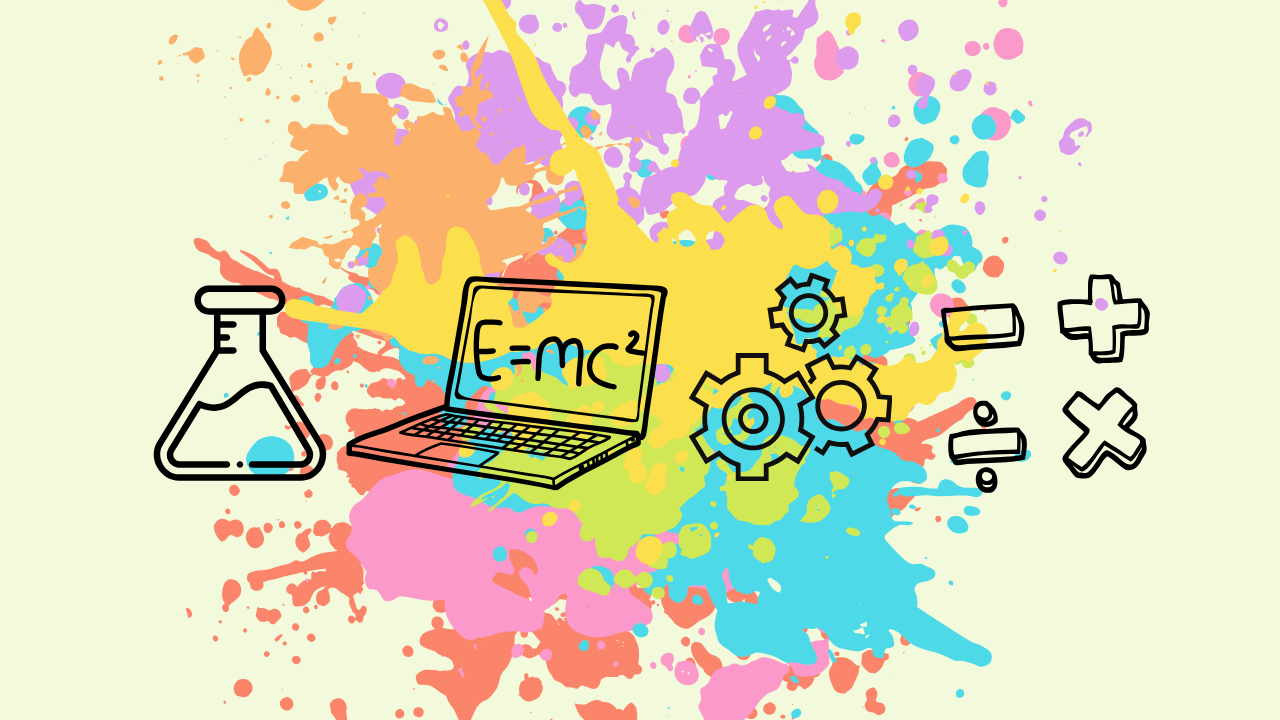Art is ultimately the foundation for science. Graphic by Anna Hauser, Abby Hoehn and Elizabeth Hein.
ELLA SULLIVAN | OPINION COLUMNIST | ehsullivan@butler.edu
Art is not considered an important study or career within the U.S. Many expressing aspirations for a career in the arts are met with concern or contempt; it’s not considered a “real job.” This, however, can’t be more false.
Art has always been important because art inspires creativity, which incites change. While change can be scary, it is necessary to continue to move forward and evolve. STEM — Science, Technology, Engineering, and Mathematics — is an emphasis of study that many go into to continue the development and creation of new ideas.
STEM majors and art majors are considered complete opposites — mutually exclusive. This could not be further from the truth. Art is change; change is the heart of innovation, and STEM must evolve to include art to continue these innovations. It’s time art is recognized as a necessary and crucial part of STEM. It’s time STEM became STEAM.
Jessica Reed, a First-Year Seminar professor at Butler, teaches “Physics and the Arts.” With extensive education in physics, creative writing and poetry, she knows how important it is to be deeply engaged in art and science, and how the inability to engage in both is a taught idea.
“I think it tends to happen around junior high … where people start getting put into boxes, and that boxing in is a real shame,” Reed said. “It’s not good for the development of the mind … the soul, the spirit.”
Starting as early as elementary school, children are taught to look out for things they are skilled at or enjoy for a prospective career, but art isn’t an acceptable choice because it is considered incompatible with any and every other subject.
Art, science and life are ultimately the same thing; it is all about connections. This connection in art and science is seen everywhere, especially in nature.
“Just look for that pattern [of connection] everywhere in nature,” Reed said. “Spider webs look like neural networks, look like galaxies and also [the root channels] underneath … the forest floor.”
This connection is completely natural, and it is beyond time that our societies embrace this. The best minds in history, especially in science, had the ability to think creatively and view aspects of life from unique perspectives. For example, Albert Einstein was engaged in music to aid his theories.
Beyond the reality that art makes one a better scientist, art is also humanity itself.
Rachel Joyce, a first-year psychology and English double major, argues that beyond expression, art is important to humans because it is what separates us from other things on Earth.
“Art is the humanity in humans,” Joyce said. “A lot of people have gotten in the trap of dehumanizing others through science … there’s a level of respect that is missing from this acknowledgment of art as something that can be an incredibly useful tool in understanding life … and that disrespect is rooted in fear.”
Rejecting the aspect of us that makes humans unique from any other species on Earth is inherently disrespectful to life itself. The disconnection of the self from our most human aspect ultimately encourages people to spread disrespect to others with the excuse of science — like those backing up eugenics who claim others are “genetically inferior” to another — despite art and science being one and the same. It is vital for societies around the world to accept, embrace and encourage art.
“[A universe without art] does not exist,” Joyce said. “It’s in our jewelry, our glasses, our architecture, the vibrations of music. It is music. It is in people’s faces. It is in people’s safety.”
In order to respect nature, life, yourself and the vast and complex reality of the universe and existence, you must accept art as a necessity for survival. There is art in history, chemistry, physics, psychology, health sciences, worldwide cultures, thinking and clothing. Any aspect of human nature that can be thought of has the involvement of art. That involvement is what makes us human.
First-year history major Ellie Propsom had a STEAM program in high school, which was a positive experience for her.
“[The program is] a great way of showing the interdisciplinary nature of art … because art teaches critical thinking.” Propsom said, “That’s one of the biggest things, is looking at something and seeing how many different ways you can interpret it and how you can represent that interpretation.”
Being forced to take a new point of view when considering a problem creates revolutionary ideas — like how Einstein used his violin to inspire his theories and aid with his open, creative mind. The largest periods of change and innovation within societies have coincided with artistic revolutions as well.
While including the artistic process in all STEM procedures going forward may make us less efficient in the short term, the long-term effects will be a society rampant with innovation and filled with individuals dedicated to empathy and consistent changes in perspective.
National focus on STEM has done wonderful things for advancing our societies, but it is now time to add art. Those studying the arts possess skills — like critical thinking and the ability to take unique perspectives on problems — and minds that will continue to push our lives toward betterment. Innovations in medicine, development and inventions in technology and overall improvements in the U.S living standards have been majorly due to the increased commitment to STEM, but we must now include art in that focus to continue our pace of change for the better.
As a society, we must move past considering the art major a “meaningless” investment of time. Our past, present and future is art. We are art, and we must embrace that to allow the continuation of society’s progression.



